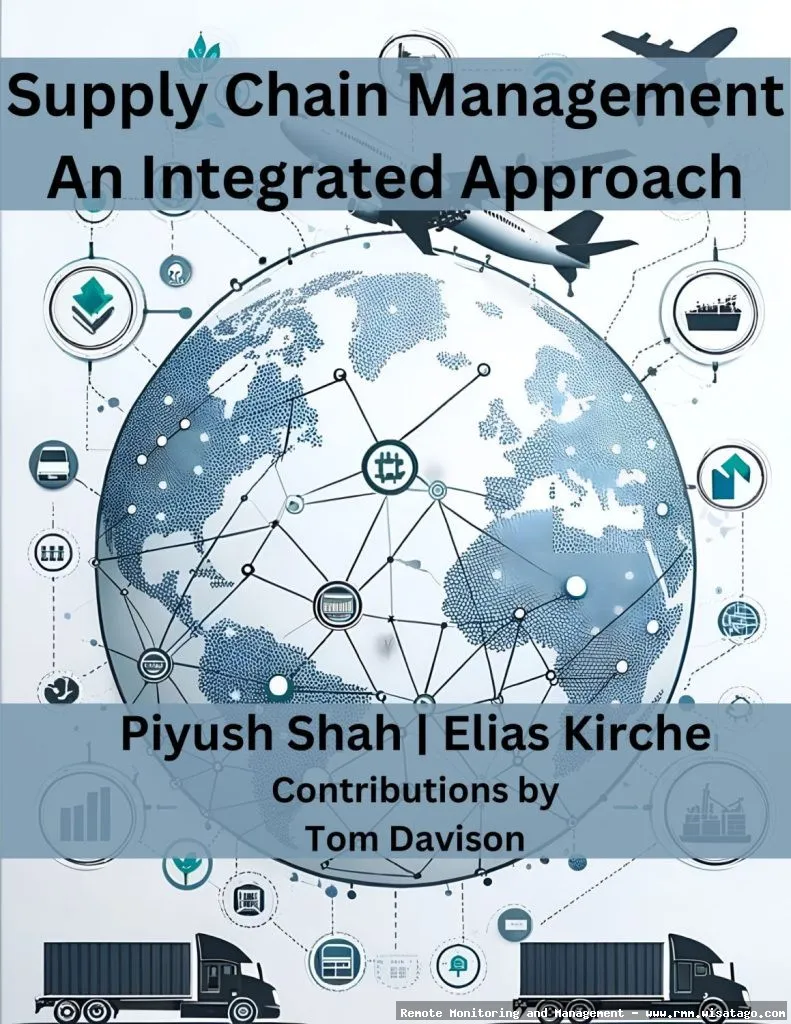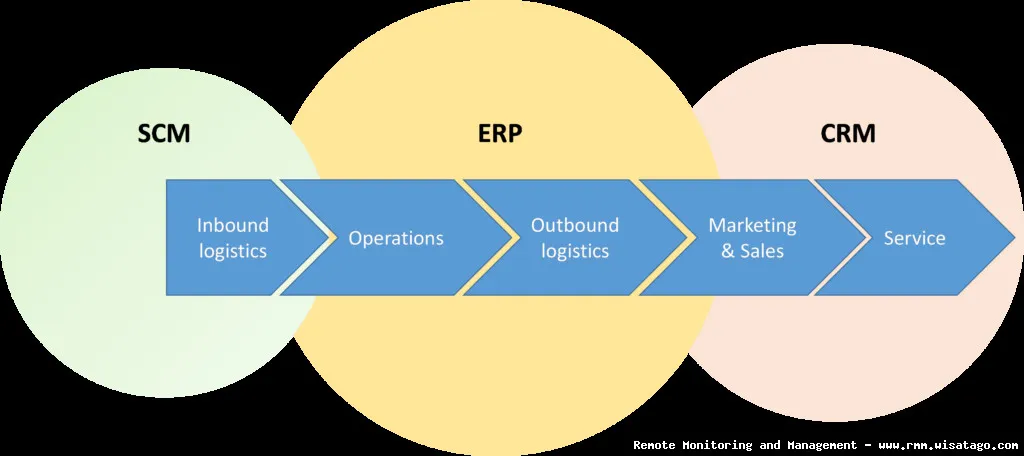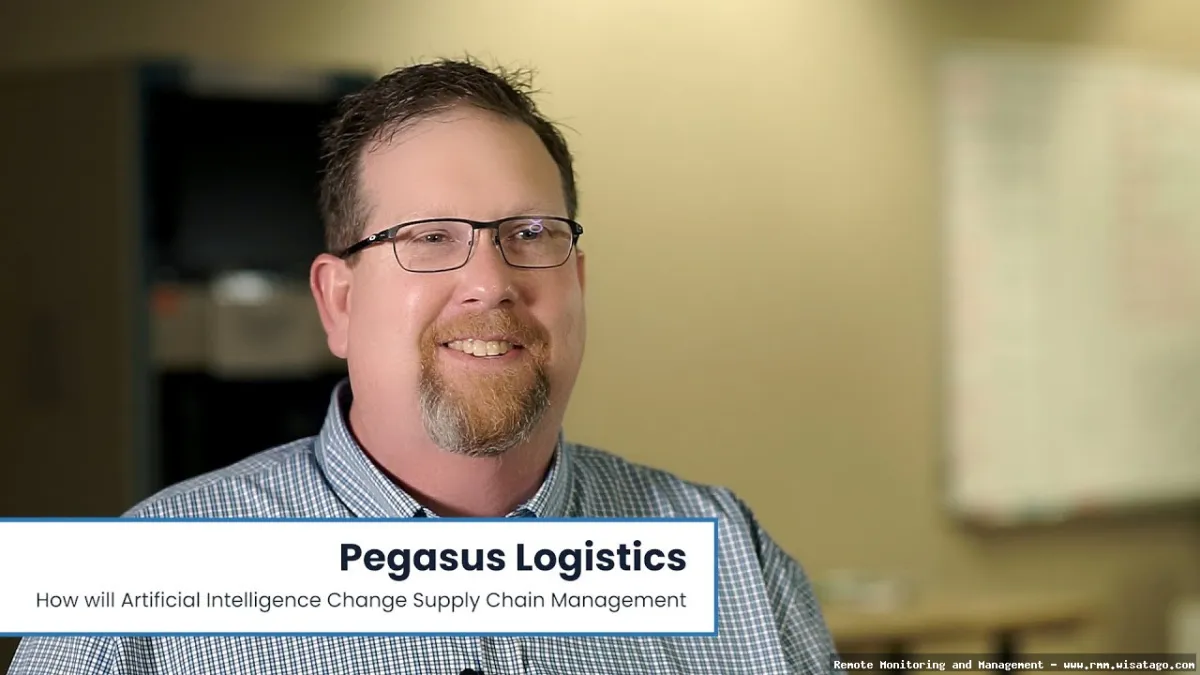In today’s interconnected business landscape, efficiency isn’t just a buzzword; it’s a survival strategy. Businesses are constantly seeking ways to streamline operations, reduce costs, and improve overall performance. One area that often gets overlooked, but holds immense potential for optimization, is the supply chain. Integrating your supply chain management (SCM) with your remote monitoring and management (RMM) system might sound a bit abstract, but trust me, the benefits are tangible and can significantly impact your bottom line.
Think of it this way: Your RMM system is already the central nervous system for your IT infrastructure. It’s constantly monitoring servers, network devices, and endpoints, alerting you to potential issues before they escalate into major problems. Now, imagine extending that visibility to include your supply chain – knowing when critical components are running low, anticipating potential delays in shipments, and proactively addressing potential disruptions. This is the power of integrating SCM with RMM.

This article will delve into the specifics of supply chain management integration with RMM systems. We’ll explore the features, benefits, challenges, and practical applications of this powerful combination. Whether you’re an IT manager, a supply chain professional, or a business owner, this guide will provide you with the information you need to understand and implement this integration strategy successfully. Let’s dive in!
Understanding Supply Chain Management (SCM)
Supply Chain Management (SCM) encompasses the planning and management of all activities involved in sourcing and procurement, conversion, and all logistics management activities. Crucially, it also includes coordination and collaboration with channel partners, which can be suppliers, intermediaries, third-party service providers, and customers. In essence, SCM integrates supply and demand management within and across companies.
Key Components of SCM
To fully understand the potential of integrating SCM with RMM, it’s important to grasp the core components of a typical supply chain:
- Planning: Demand forecasting, inventory planning, production scheduling, and capacity planning.
- Sourcing: Selecting suppliers, negotiating contracts, and managing supplier relationships.
- Making: Production processes, quality control, and manufacturing operations.
- Delivering: Logistics, warehousing, transportation, and distribution.
- Returning: Reverse logistics, product returns, and warranty management.
The Importance of Efficient SCM
An efficient supply chain is crucial for several reasons:
- Cost Reduction: Optimizing inventory levels, reducing waste, and streamlining logistics can lead to significant cost savings.
- Improved Customer Satisfaction: Meeting customer demand on time and in full enhances customer loyalty and satisfaction.
- Increased Agility: A well-managed supply chain can quickly adapt to changing market conditions and customer needs.
- Enhanced Competitiveness: A more efficient supply chain can provide a competitive advantage by enabling faster delivery times, lower prices, and better product quality.
What is a Remote Monitoring and Management (RMM) System?
Now, let’s shift gears and talk about RMM systems. As the name suggests, RMM is a software solution used by IT professionals to remotely monitor and manage IT infrastructure. This includes servers, desktops, laptops, mobile devices, and network devices. The key is proactive management – identifying and resolving issues before they impact users or business operations.
Core Features of an RMM System
Typical features of an RMM system include:
- Remote Monitoring: Real-time monitoring of system performance, resource utilization, and application health.
- Alerting: Automated alerts triggered by predefined thresholds or events, notifying IT staff of potential issues.
- Remote Access: Secure remote access to managed devices for troubleshooting and maintenance.
- Patch Management: Automated patching of operating systems and applications to ensure security and stability.
- Software Deployment: Remote deployment of software applications and updates.
- Automation: Scripting and automation capabilities to automate repetitive tasks and streamline IT operations.
- Reporting: Comprehensive reporting on system performance, security posture, and IT service delivery.
Benefits of Using an RMM System
RMM systems offer numerous benefits to IT teams, including:

- Proactive Problem Resolution: Identifying and resolving issues before they impact users.
- Reduced Downtime: Minimizing downtime and ensuring business continuity.
- Improved Efficiency: Automating tasks and streamlining IT operations.
- Enhanced Security: Proactively managing security vulnerabilities and protecting against threats.
- Cost Savings: Reducing IT costs through proactive management and automation.
Integrating SCM and RMM: The Synergy
The magic happens when you connect these two systems. Integrating SCM with RMM creates a powerful synergy that provides unparalleled visibility and control over your entire IT ecosystem, from the server room to the supply chain.
How the Integration Works
The integration typically involves connecting the RMM system with the SCM system through APIs (Application Programming Interfaces). This allows the RMM system to access data from the SCM system, such as:
- Inventory Levels: Real-time inventory levels of hardware components, software licenses, and other IT assets.
- Purchase Orders: Information about outstanding purchase orders for IT equipment and supplies.
- Shipping Status: Tracking information for incoming shipments of IT equipment.
- Warranty Information: Warranty details for hardware and software assets.
Conversely, the SCM system can receive data from the RMM system, such as:
- Hardware Failure Rates: Data on hardware failures and component lifecycles.
- Software Usage: Information on software usage patterns and license compliance.
- Performance Data: Performance metrics that can impact demand forecasting and supply planning.
Benefits of Integrating SCM and RMM
The benefits of this integration are significant and far-reaching:
- Proactive Inventory Management: By monitoring hardware failure rates and software usage, the RMM system can predict when replacements or upgrades will be needed. This information can be fed into the SCM system to trigger purchase orders and ensure that necessary equipment is available when needed.
- Improved Capacity Planning: RMM data on server utilization and network traffic can help the SCM system forecast future capacity needs and plan for infrastructure upgrades.
- Reduced Downtime: By proactively managing hardware and software, the RMM system can prevent failures that could disrupt business operations. This reduces downtime and minimizes the impact on the supply chain.
- Optimized Procurement: The SCM system can use RMM data to optimize procurement processes and ensure that IT equipment is purchased at the best possible price.
- Enhanced Security: Integrating SCM with RMM can help improve security by ensuring that all IT assets are properly managed and patched.
Use Cases and Examples
Let’s look at some real-world examples of how SCM and RMM integration can benefit different industries:
Manufacturing
In a manufacturing environment, RMM can monitor the health of industrial control systems (ICS) and programmable logic controllers (PLCs). When a critical component shows signs of failure, the RMM system can alert the SCM system to order a replacement part, minimizing downtime and preventing production delays.
Healthcare
In healthcare, RMM can monitor the performance of medical devices and equipment. When a device is nearing the end of its lifecycle, the RMM system can notify the SCM system to initiate a replacement order, ensuring that critical equipment is always available for patient care.

Retail
In retail, RMM can monitor the performance of point-of-sale (POS) systems and other IT infrastructure. When a POS system malfunctions, the RMM system can alert the SCM system to order a replacement, minimizing disruption to sales and customer service.
Challenges and Considerations
While the benefits of integrating SCM and RMM are clear, there are also some challenges and considerations to keep in mind:
Data Integration Complexity
Integrating two complex systems like SCM and RMM can be technically challenging. It requires careful planning and execution to ensure that data is accurately and reliably exchanged between the two systems. You’ll need to consider data mapping, data transformation, and data validation to ensure data integrity.
Security Concerns
Integrating SCM and RMM can also raise security concerns. It’s important to ensure that the integration is implemented securely to prevent unauthorized access to sensitive data. Implement robust authentication and authorization mechanisms, encrypt data in transit and at rest, and regularly audit the integration for vulnerabilities.
Vendor Compatibility
Not all SCM and RMM systems are compatible with each other. It’s important to choose systems that are designed to work together or that offer APIs that can be used to integrate them. Research compatibility and integration options before making any purchasing decisions. Effective IT management often relies on robust monitoring and automation, RMM allowing for proactive issue resolution and improved service delivery.
Cost
Implementing and maintaining the integration can be costly. You’ll need to factor in the cost of software licenses, hardware, implementation services, and ongoing maintenance. Carefully evaluate the costs and benefits of the integration before making a decision.
Best Practices for Successful Integration
To ensure a successful integration of SCM and RMM, consider the following best practices:

Define Clear Goals and Objectives
Before you start the integration process, clearly define your goals and objectives. What do you hope to achieve by integrating SCM and RMM? What specific problems are you trying to solve? Having clear goals will help you stay focused and measure the success of the integration.
Choose the Right Tools
Select SCM and RMM systems that are compatible with each other and that meet your specific needs. Consider factors such as features, scalability, security, and cost.
Plan the Integration Carefully
Develop a detailed integration plan that outlines the steps involved in the integration process, including data mapping, data transformation, and testing. Assign clear roles and responsibilities to team members.
Test Thoroughly
Thoroughly test the integration to ensure that data is accurately and reliably exchanged between the two systems. Conduct unit testing, integration testing, and user acceptance testing.
Monitor and Maintain the Integration
Once the integration is implemented, monitor its performance and maintain it regularly. Address any issues or problems that arise promptly. Regularly review and update the integration as needed to ensure that it continues to meet your needs.
Conclusion
Integrating supply chain management with remote monitoring and management systems offers a powerful way to optimize your IT operations and improve overall business performance. By providing real-time visibility into your IT infrastructure and supply chain, this integration enables proactive problem resolution, reduced downtime, and optimized procurement. While there are challenges and considerations to keep in mind, following best practices can help ensure a successful integration.
As IT environments become increasingly complex and interconnected, the need for integrated solutions like SCM and RMM will only continue to grow. By embracing this integration, businesses can gain a competitive advantage and drive greater efficiency and profitability. So, take the time to evaluate your current systems and explore the potential of integrating SCM with RMM – it could be the key to unlocking significant improvements in your IT operations and supply chain management.

Hopefully, this guide has provided you with a comprehensive understanding of supply chain management integration with RMM systems. Remember to carefully plan your integration, choose the right tools, and monitor the integration regularly to ensure its continued success. Good luck!
Conclusion
In conclusion, the integration of Supply Chain Management (SCM) with Remote Monitoring and Management (RMM) systems represents a significant leap forward in operational efficiency and proactive problem-solving. By bridging the gap between IT infrastructure management and the physical flow of goods and materials, organizations can achieve unprecedented levels of visibility, control, and responsiveness across their entire value chain. This synergistic approach empowers businesses to anticipate disruptions, optimize resource allocation, and ultimately, deliver superior customer experiences. The benefits, ranging from reduced downtime and improved inventory management to enhanced security and streamlined communication, clearly demonstrate the transformative potential of this integration.
Reflecting on the key points discussed, it’s evident that embracing SCM–RMM integration is no longer a futuristic concept but a critical imperative for businesses seeking a competitive edge in today’s dynamic marketplace. The enhanced data insights and automated workflows pave the way for data-driven decision-making and continuous improvement. To further explore the potential of this integration for your organization, we encourage you to download our comprehensive whitepaper on “Optimizing Supply Chains with RMM: A Practical Guide” and discover how you can begin implementing these strategies today.
Frequently Asked Questions (FAQ) about Supply Chain Management Integration with RMM Systems
How can integrating my Supply Chain Management (SCM) system with my Remote Monitoring and Management (RMM) platform improve IT service delivery for my managed service provider (MSP) business?
Integrating your Supply Chain Management (SCM) system with your Remote Monitoring and Management (RMM) platform offers significant benefits for MSPs seeking to optimize IT service delivery. By connecting these systems, you gain real-time visibility into hardware and software inventory levels, warranty statuses, and end-of-life (EOL) dates. This allows for proactive management, preventing downtime caused by outdated or failing equipment. For example, the RMM can flag devices nearing warranty expiration, triggering an automated procurement process through the SCM system. This integration streamlines asset management, reduces manual data entry, and ensures timely replacements or upgrades, ultimately improving service reliability and customer satisfaction. Improved planning, reduced risk of outages, and more efficient resource allocation are all key outcomes.
What specific data points should I synchronize between my RMM and SCM systems to maximize the benefits of integration for better IT asset lifecycle management?
To achieve optimal IT asset lifecycle management through RMM and SCM integration, focus on synchronizing key data points. These include: Asset Inventory Details (hardware and software specifications, serial numbers, locations), Warranty Information (start and end dates, service levels), Contract Details (service agreements, renewal dates, associated costs), Software License Information (license keys, usage statistics, expiration dates), Alert Data (performance metrics, error logs, security vulnerabilities identified by the RMM), and Procurement Data (purchase orders, vendor information, pricing). By sharing this data, you create a comprehensive view of each asset’s lifecycle, enabling proactive maintenance, automated renewal processes, and informed purchasing decisions. This reduces the risk of compliance issues, minimizes downtime, and optimizes IT spending.
What are the potential security risks and best practices I should consider when integrating my RMM and SCM systems to protect sensitive supply chain data?
Integrating RMM and SCM systems introduces potential security risks that must be carefully addressed. Data breaches, unauthorized access, and supply chain attacks are primary concerns. Implement robust security measures, including: Strong Authentication and Authorization (multi-factor authentication, role-based access control), Data Encryption (encrypt data in transit and at rest), Regular Security Audits (identify and address vulnerabilities), Secure API Integrations (use secure protocols like HTTPS and TLS), Vendor Security Assessments (ensure vendors meet security standards), and Incident Response Plan (have a plan in place to respond to security incidents). Furthermore, segmenting networks and limiting data access to only necessary personnel can significantly reduce the attack surface. Regular security awareness training for employees is also crucial to prevent phishing attacks and other social engineering tactics that could compromise sensitive supply chain data. Continuous monitoring and threat detection are also essential to identify and respond to potential security breaches in a timely manner.